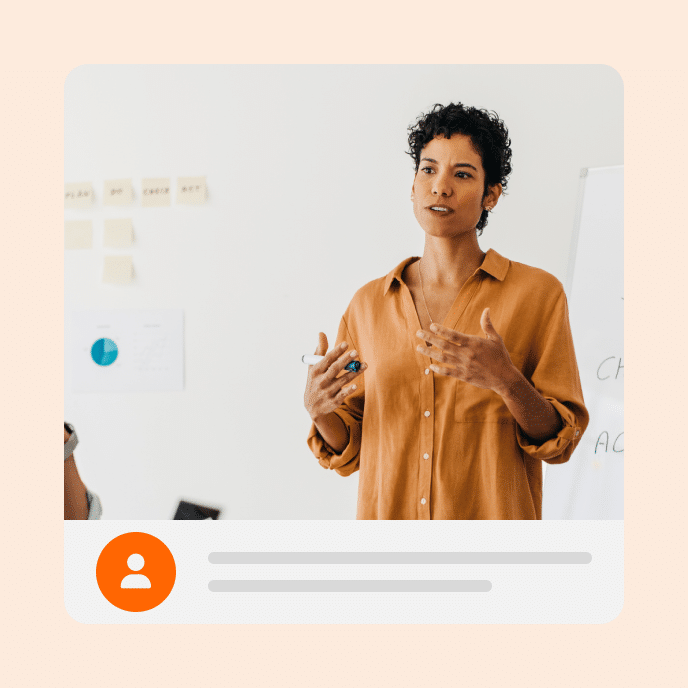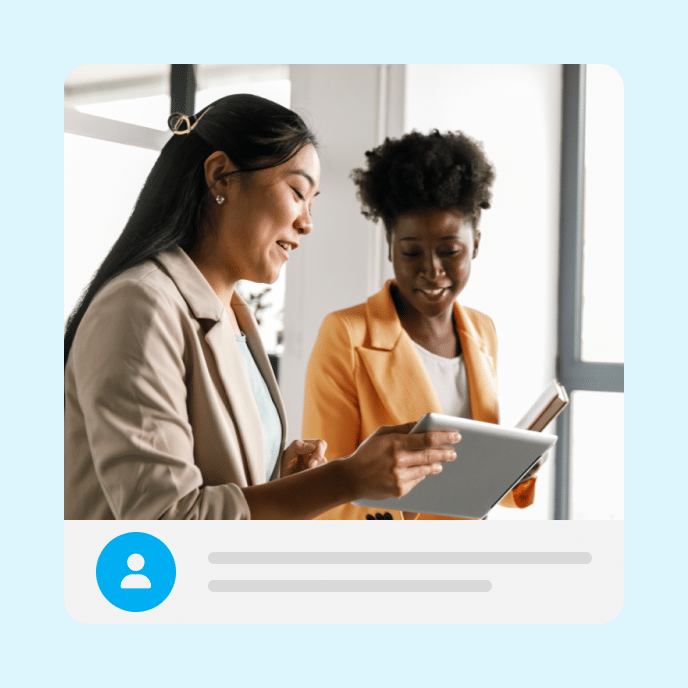What Is E-Learning and Should I Use It?
New to e-learning? Get the basics here: what it is, when to use it, and how to create it.

The answer…that depends
If you ask someone on the street for the definition of e-learning, responses would definitely vary.
“Isn’t that for schools?”
“It’s instructional videos, right?”
“We go to webinars on new product launches at my company. Is that e-learning?”
That “e” in e-learning is a clue. In the broadest sense, e-learning is any learning that is created and/or distributed electronically. Schools may use e-learning to deliver classroom instruction, companies may send corporate training electronically, and individuals may use e-learning to gain new personal or professional skills.
In this blog, we’ll zero in on corporate e-learning, explore some of the basics, and learn about practices and tools that distinguish the good from the not-so-good e-learning.
Key Takeaways
- At its most basic, e-learning is learning delivered electronically—but it’s not all created equal.
- Corporate teams tend to use a combination of software tools to create, collaborate, and distribute learning content.
- The best e-learning is often interactive rather than passive and includes media-rich, interactive content that’s self-paced and trackable.
Common types of e-learning
Let’s start with some context. These are some e-learning basics you may have seen at work.
Passive vs. active e-learning
Have you ever taken an online class—maybe employee onboarding or a required lesson on state labor laws—and your only job is to keep your eyeballs open and wait until it’s time to click to the next slide? That’s passive learning. Passive learning, where the learner simply advances to the next slide or video, is common, but it’s not usually highly effective.
A better model is active or interactive learning. This interactive model invites the learner to engage and respond to the content and requires more from them. This course may include simple interactions like quizzes, drag-and-drop sorting activities, or reflection questions. Or, it may include more complex interactions like games, branching scenarios, or virtual reality (VR) immersive experiences. Which interaction is best for the learner depends on a variety of factors like subject matter, audience, impact risks, and more.
Synchronous vs. asynchronous e-learning
This category simply defines when the learning happens in time. Synchronous learning takes place for all participants at the same time. A webinar at a set time, teaching a new skill to a defined group, is synchronous learning.
Asynchronous learning allows the learner to consume the content at their own pace. The course might be available on different devices, such as desktops or mobile phones. This model works well when individual learners can define how and when they take the content.
Neither model is better than the other, but it’s important to consider which one is best for the learning outcome you want.
These are just a few introductory terms, but certainly not the full extent of e-learning content!
What e-learning software tools do corporate trainers use?
New to e-learning? If so, you may be a little perplexed by all the different apps your organization uses to create, collaborate, and distribute e-learning. Course creators use apps or software for creating or “authoring” e-learning. They may use other apps or tools for distributing the finished e-learning.
Different apps include different reporting dashboards to review learner and group performance. Still others may do some combination of the above. With so many options and variables, it can be hard to choose the right fit.
Let’s fill in some blanks by examining the kinds of learning content you can create with an e-learning authoring app. Then, we’ll give you some more considerations to keep in mind.
What’s an e-learning authoring tool, and what does it do?
An e-learning authoring tool is simply software that helps you make learning content. You may also hear them called computer-based training, online training, or online courses. but they all help you build a training experience learners see on a computer, tablet, or smartphone.
Decades ago, you may have needed a team of programmers to build a self-guided course. Today, e-learning software empowers anyone to create e-learning—without programming skills. While different apps have different capabilities, quality e-learning includes interactive rather than passive activities.
Media-rich and interactive content
While technically speaking, tools like PowerPoint, Google Docs, or even PDFs are electronic, we wouldn’t classify them as authoring apps or courses built in those tools as e-learning. Effective e-learning often uses media that invites learners to engage with content.
For example, learners might:
- Tap on images to explore information
- Click on a video or image to explore a new process in a 360-degree view
- Drag to sort and prioritize content or images
- Respond to video- or image-based branched scenario questions
This emphasis on media-rich, tactile interaction makes e-learning more enticing than static text on a screen. Look for e-learning authoring that makes creating this type of content quick and easy. It should also work flawlessly on any device your learner uses.
Self-paced and trackable
While a synchronous webinar counts as e-learning, most e-learning is self-paced and asynchronous—there’s no instructor or presenter setting the pace in real-time. That pacing flexibility also affords learners time to take learning in small bites or in large chunks as their schedule allows. It also means learning can start on the bus to work and end with a desktop quiz.
That freedom to learn anywhere, anytime doesn’t have to mean a learning free-for-all. You want to know how learning impacts business ROI. That’s where tracking comes in.
There are several ways to get this information. Some stand-alone e-learning authoring apps include reporting, giving you the ability to track or report on your learners’ progress. Many others use a separate hosting app known as a Learning Management System, or LMS, to track and measure learner progress.
Authoring apps that include an LMS, like Articulate 360 with Reach 360, are also available. Pairing an authoring app with a natively integrated frictionless LMS like Reach 360 allows creators to move quickly to deliver quick-change learning content and track who’s taken the new course and how they performed.
E-learning is a natural fit for corporate learning
Next time someone stops you on the street and asks, “What’s e-learning?” you’ll be able to tell them that e-learning is any electronic learning, but interactive e-learning offers better results. You’ll look especially impressive when you follow up by letting them know that tools to make e-learning include authoring apps to create interactive, media-rich content that learners can take at their own pace.
What’s more, you’ll say, they pair with a delivery method, like an LMS, and some tools even combine creating, collaborating, and delivery. And you won’t forget to tell them that no tech stack is complete without reporting for visibility into learner progress. We can’t wait to see how you impress them!
To explore some basics of creating e-learning, visit the Articulate Training library for loads of on-demand video content to get you started.
You may also like

ILT (Instructor-Led Training): Everything You Need to Know
ILT brings learning to life through real-time feedback, social interaction, and blended approaches that keep learners engaged and knowledge retained.

